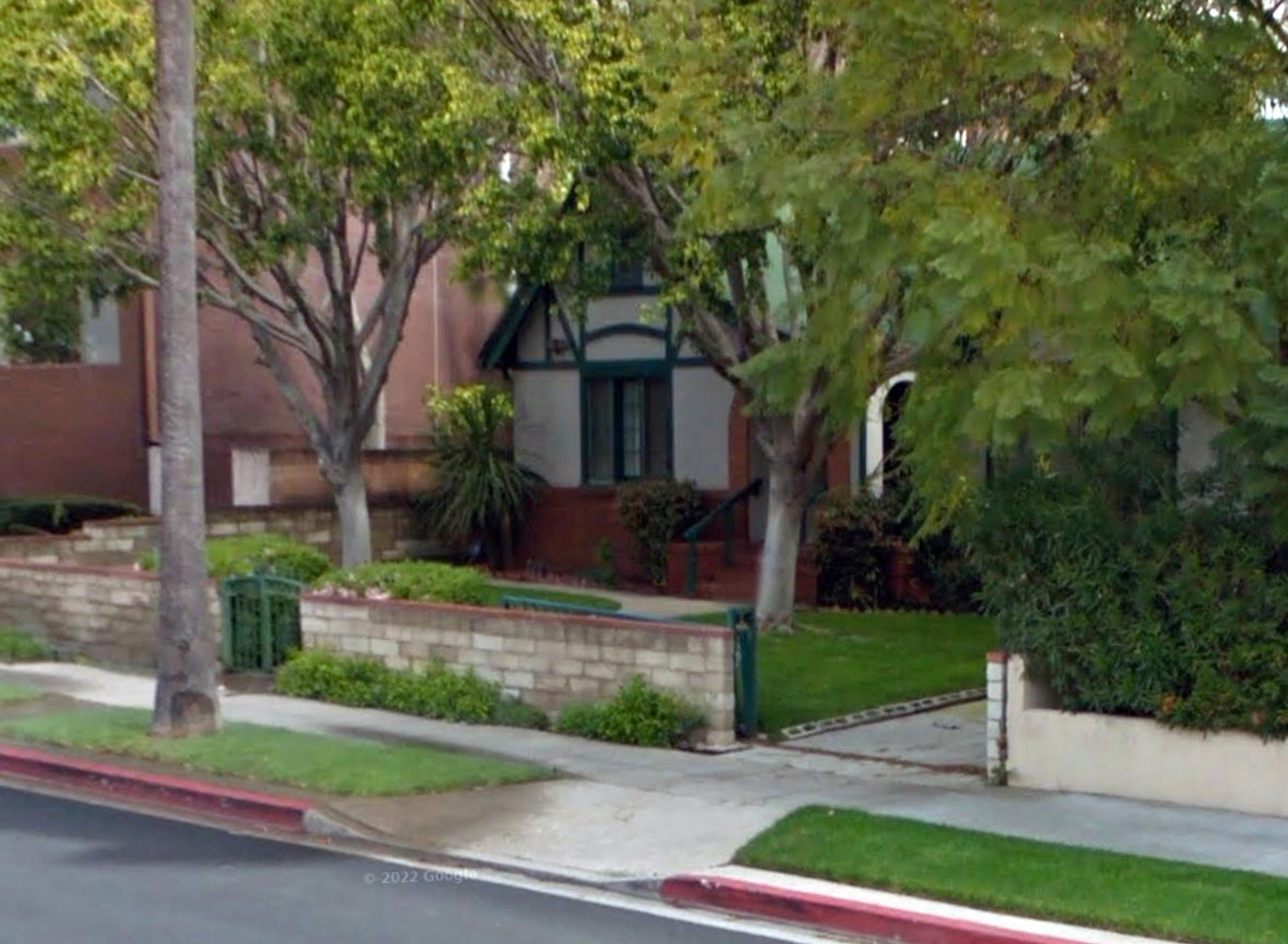208 North Crescent Drive in Beverly Hills just came over the transom...
Were *I* to live in the area (and park my money with Commerce Bank of Beverly Hills, naturally) why would I choose to be hemmed into some high-rise multi-unit? Or worse, a McMansion with gold columns and a heliport, or whatever gauche accoutrements the nouveau riche favor today.
Rather, a modest, vaguely-storybook, half-timbered little house in Beverly Hills would be the epitome of ease and grace. Sadly, Beverly Hills isn't what it used to be. But what is.
Read all about it, in this cut-and-paste from a Facebook post by Beverly Hills Heritage:
The last remaining single-family residence on North Crescent Drive, between Wilshire and Santa Monica Boulevards, will be razed and replaced by a four-story, 10-unit apartment building, if, as expected, the City Council approves the Planning Commission’s recommendation to go ahead with the project. The home, a mock-Tudor cottage at 208 North Crescent Drive, was built by Daniel Quinlan, a Beverly Hills real estate pioneer who, in 1919, purchased the Beverly Drive Garage, then the only filling station between Fairfax and Sawtelle. It was located approximately where the Sterling Plaza Building now stands, just east of the northeast corner of Beverly Drive and Wilshire Boulevard.
After the Beverly Hills Speedway opened, Quinlan serviced the race cars at his garage. He invested the money he earned from that endeavor in real estate, building the city’s first movie house, the Beverly Theatre, on North Beverly Drive, just around the corner from the garage, in 1924. He opened a real estate office in one of the theatre’s retail storefronts, selling land to theatre patrons. He built his Crescent Drive house in 1928, where his daughter continued to live until 2005. The house was found ineligible for preservation under federal, state, and local laws.
This little gem is already hemmed in by apartment buildings, so naturally what you need there is an apartment building:
It will be replaced by this, of course, because why wouldn't it.
These sort of homes once made Beverly Hills attractive, different. Those things are anathema to the present, so it must go. We'll ignore the obvious importance of this little house having been built by a Beverly Hills real estate/auto/theater pioneer, because everyone knows real estate, the automobile, and movies have no part in the story of Los Angeles! And hints of Tudorbethan architecture are just so offensive to modern sensibilities, after all.
To the landfill with you!
About Nathan Marsak
NATHAN MARSAK says: “I came to praise Los Angeles, not to bury her. And yet developers, City Hall and social reformers work in concert to effect wholesale demolition, removing the human scale of my town, tossing its charm into a landfill. The least I can do is memorialize in real time those places worth noting, as they slide inexorably into memory. In college I studied under Banham. I learned to love Los Angeles via Reyner’s teachings (and came to abjure Mike Davis and his lurid, fanciful, laughably-researched assertions). In grad school I focused on visionary urbanism and technological utopianism—so while some may find the premise of preserving communities so much ill-considered reactionary twaddle, at least I have a background in the other side. Anyway, I moved to Los Angeles, and began to document. I drove about shooting neon signs. I put endless miles across the Plains of Id on the old Packard as part of the 1947project; when Kim Cooper blogged about some bad lunch meat in Compton, I drove down to there to check on the scene of the crime (never via freeway—you can’t really learn Los Angeles unless you study her from the surface streets). But in short order one landmark after another disappeared. Few demolitions are as contentious or high profile as the Ambassador or Parker Center; rather, it is all the little houses and commercial buildings the social engineers are desperate to destroy in the name of the Greater Good. The fabric of our city is woven together by communities and neighborhoods who no longer have a say in their zoning or planning so it’s important to shine a light on these vanishing treasures, now, before the remarkable character of our city is wiped away like a stain from a countertop. (But Nathan, you say, it’s just this one house—no, it isn’t. Principiis obsta, finem respice.) And who knows, one might even be saved. Excelsior!””
Nathan’s blogs are: Bunker Hill Los Angeles, RIP Los Angeles & On Bunker Hill.
